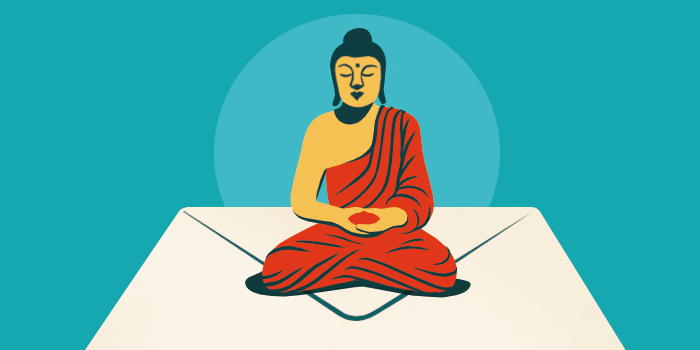What is the nembutsu?

A statue depicts Shinran, the founder of the Jodo Shinshu school and nembutsu advocate, at Shitennoji Temple, Osaka, Japan. | Julian Elliott Photography / Alamy Stock Photo
In Pure Land Buddhism, the ordinary person, recognizing his or her bombu nature, reaches out for help to Amida, the buddha of infinite light, typically by saying Amida Buddha’s name (practicing vocal nembutsu). In Japanese, nem or nen means “mindfulness,” and butsu is “buddha.” Nembutsu is, therefore, “mindfulness of [Amida] Buddha.” The actual words are “Namo Amida Butsu” (Japanese), “Namo Omito Fo” (Chinese), “Namo Adida Phat” (Vietnamese), “Om Ami Dewa Hrih” (Tibetan), or a variant may be used with the buddha’s Sanskrit name, Amitabha, “Om Amitabha Hum,” “Amitabhaya” and so on. The important thing is not the precise words so much as the intention behind them.
Nembutsu can be practiced out loud or inwardly. It can be coordinated with the breath in meditation, although Pure Land schools tend not to put emphasis upon seated meditation. Pilgrimage to holy places with recitation of nembutsu along the way and at the site, perhaps the standard form of Buddhist practice for early lay Buddhists, is still common today. Services at Pure Land temples include recitations of Pure Land texts as well as nembutsu, which may be practiced in blocks of ten (junen).
Nembutsu may also be practiced informally by Pure Land Buddhists in all aspects of daily life to link everything that happens with the spirit of Buddha. It serves thereby as preparation for mindfulness of Amida Buddha at the great moment of life, which is the moment of death.

Tricycle is more than a magazine
Gain access to the best in sprititual film, our growing collection of e-books, and monthly talks, plus our 25-year archive
Subscribe now